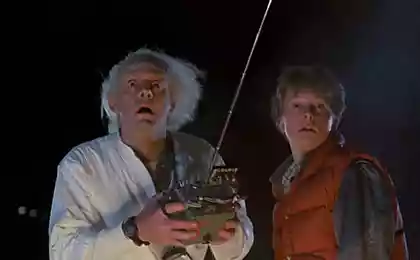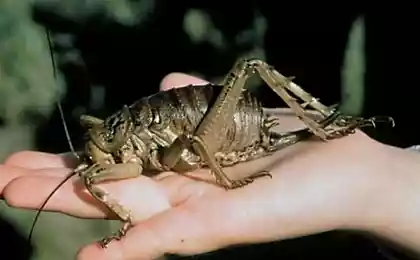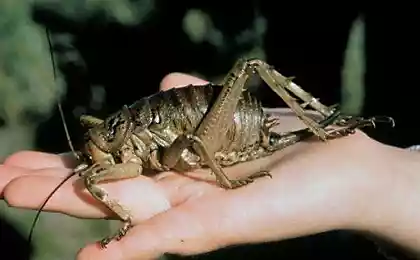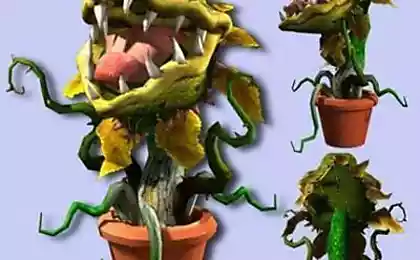587
Military Strategy insects (6 photos)
When standing on the sidewalk waiting for his little wife nakrashivayuscheysya you see ants, scurrying to and fro, you even can not imagine how to order them, at first glance, the chaos. Their orders are very strict and unquestioning. You will laugh when they're going into battle, but in the same way we look. But you'll never see that one ant kill others in this they are different from us.
1. The beetles make shields and use them during a battle formation.
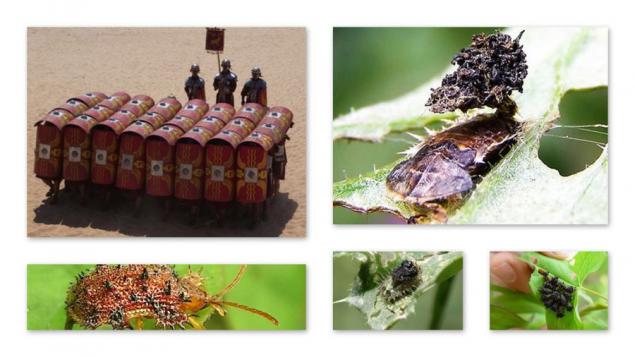
Remember, as the Romans do "box" of the shields or the Greeks constructed a wall. Thus it was created a live tank that could not be stopped. The same children do tortoise beetles.
But these bugs are not just born with a shield on the back. They begin their life by a soft and dryablenkoy larvae. Over time, they build up the shell with the old skin and feces.
However, one is unlikely to shield protects the beetle as well as two. So it's one of them to gather in groups and build a barrier shields. Beetles on the wings display their fecal shields on the sides, while those in the center, over the head. 2. Bees - a genius of martial affairs.

All probably are what the siege? Enemies are surrounded by superior forces besieged and starved them to death. And precipitation, in turn, try to remain as long as possible. Well, you want to see what it looks like bee siege?
This massive pile of corpses is a terrible consequence of the siege of the bee. They do not allow their enemies to leave the hive. When the guards get out from the hive, then immediately begin to fight, and if someone manages to fly, the fight takes place in the air. When a bee loses its sting, she falls dead to the ground and writhing in terrible agony.
Bees, too, there are several strategies of siege. They can go into battle or take starve. Since the war - dirty undertaking, bees from nearby hives also feel pheromones war and consider it their duty to join the battle.
3. Ants use the services of mercenaries.

As history shows, the standing army - the key to militarize domination, but it's pretty bad news for farmers, at whose expense the military are going to eat. Therefore, there is a huge ants Megalomyrmex, which protect the leaf cutter from enemies in exchange for food.
Yes, mercenaries charge a too big fee, but nothing else to do when your colony to prepare a powerful raid. It is better to be alive and to tolerate the theft of food from his guards than foreign looters.
After one such raid ants farmers are willing to keep Megalomyrmex on an ongoing basis.
Also, the ants are not averse to conclude alliances between species, especially against the red wood ants. They are renowned as the highest standing in formic hierarchy. There are cases where they were engaged in the slave trade, or simply used other types of ants in the mercenary purposes.
4. Millipedes create demilitarized zones long 230 kilometers.

Human society for centuries erects borders. Wall to protect themselves from the Mongols; Roman wall to protect themselves from the barbarians; Americans built a fence to not let pesky Mexicans. All the boundaries, there are proven for centuries the human mistrust. But these boundaries meknut compared to those who erected the Australian millipede.
Two species of millipedes from northwest Tasmania claim their right to own territories in different parts of the island. Their boundaries may overlap, but never meet. Moreover, this limit total length of 230 kilometers.
Generally, the boundaries are building on some geography: relief, water, soil, climate. But these insects spit on all the rules. They took their own agreement through the mountains, rivers, plants and weather.
Scientists asked to explain this phenomenon, but they just shook his head sadly.
5. Military training termites.

Do not trust the movies. Termites are not so bloodthirsty and ferocious, that may fill up a person alive or elephant.
Just in military termites have advanced far beyond the rest of insects. They have an entire podcast military. And foolish not to use it. And if you combine the deadly forces cunning strategy, the Crimea would be their ...
For example, when termite workers leave in search of food, they are accompanied by guards termites. They are surrounded on all sides by the colony and stripped the enemy.
When the enemy invaded their home, all wars are going to be protected. They give a signal that is heard throughout the termite mound. This signal comes and the workers, if the damaged wall, they walled it until the soldiers with their lives holding back the enemy. There were occasions when we had to barricade the tunnels mound corpses of their brothers and enemies. Of course, not Napoleonic strategy, but still!
6. The ants do not leave anyone.
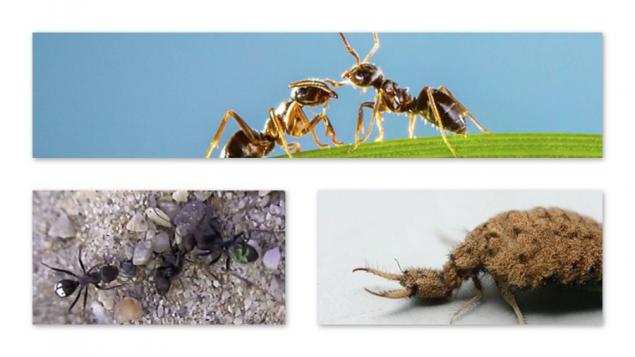
What distinguishes us from animals willingness to help each other in times of crisis. Insects also donate half the colony life for the salvation of another. So many victims vain ... Despite which side.
Back in the 19th century, biologists have discovered that the ants dig each other out of the sand. A little later we conducted an experiment in which the ants deliberately entangled in the nylon wool. Surprisingly, the insects have started rescue operation. They dug, pulled and nibbled not calming down until until all the relatives will not be released.
Their camaraderie goes much further. Some ants have thrown into the pit to the ant lion. When he grabbed one, all the others began to bite the monster. Then he threw his prisoner and went to another ant. But salvation is not made to wait long for the return of his duty and immediately rushed into battle to rescue his friend.
1. The beetles make shields and use them during a battle formation.

Remember, as the Romans do "box" of the shields or the Greeks constructed a wall. Thus it was created a live tank that could not be stopped. The same children do tortoise beetles.
But these bugs are not just born with a shield on the back. They begin their life by a soft and dryablenkoy larvae. Over time, they build up the shell with the old skin and feces.
However, one is unlikely to shield protects the beetle as well as two. So it's one of them to gather in groups and build a barrier shields. Beetles on the wings display their fecal shields on the sides, while those in the center, over the head. 2. Bees - a genius of martial affairs.

All probably are what the siege? Enemies are surrounded by superior forces besieged and starved them to death. And precipitation, in turn, try to remain as long as possible. Well, you want to see what it looks like bee siege?
This massive pile of corpses is a terrible consequence of the siege of the bee. They do not allow their enemies to leave the hive. When the guards get out from the hive, then immediately begin to fight, and if someone manages to fly, the fight takes place in the air. When a bee loses its sting, she falls dead to the ground and writhing in terrible agony.
Bees, too, there are several strategies of siege. They can go into battle or take starve. Since the war - dirty undertaking, bees from nearby hives also feel pheromones war and consider it their duty to join the battle.
3. Ants use the services of mercenaries.

As history shows, the standing army - the key to militarize domination, but it's pretty bad news for farmers, at whose expense the military are going to eat. Therefore, there is a huge ants Megalomyrmex, which protect the leaf cutter from enemies in exchange for food.
Yes, mercenaries charge a too big fee, but nothing else to do when your colony to prepare a powerful raid. It is better to be alive and to tolerate the theft of food from his guards than foreign looters.
After one such raid ants farmers are willing to keep Megalomyrmex on an ongoing basis.
Also, the ants are not averse to conclude alliances between species, especially against the red wood ants. They are renowned as the highest standing in formic hierarchy. There are cases where they were engaged in the slave trade, or simply used other types of ants in the mercenary purposes.
4. Millipedes create demilitarized zones long 230 kilometers.

Human society for centuries erects borders. Wall to protect themselves from the Mongols; Roman wall to protect themselves from the barbarians; Americans built a fence to not let pesky Mexicans. All the boundaries, there are proven for centuries the human mistrust. But these boundaries meknut compared to those who erected the Australian millipede.
Two species of millipedes from northwest Tasmania claim their right to own territories in different parts of the island. Their boundaries may overlap, but never meet. Moreover, this limit total length of 230 kilometers.
Generally, the boundaries are building on some geography: relief, water, soil, climate. But these insects spit on all the rules. They took their own agreement through the mountains, rivers, plants and weather.
Scientists asked to explain this phenomenon, but they just shook his head sadly.
5. Military training termites.

Do not trust the movies. Termites are not so bloodthirsty and ferocious, that may fill up a person alive or elephant.
Just in military termites have advanced far beyond the rest of insects. They have an entire podcast military. And foolish not to use it. And if you combine the deadly forces cunning strategy, the Crimea would be their ...
For example, when termite workers leave in search of food, they are accompanied by guards termites. They are surrounded on all sides by the colony and stripped the enemy.
When the enemy invaded their home, all wars are going to be protected. They give a signal that is heard throughout the termite mound. This signal comes and the workers, if the damaged wall, they walled it until the soldiers with their lives holding back the enemy. There were occasions when we had to barricade the tunnels mound corpses of their brothers and enemies. Of course, not Napoleonic strategy, but still!
6. The ants do not leave anyone.

What distinguishes us from animals willingness to help each other in times of crisis. Insects also donate half the colony life for the salvation of another. So many victims vain ... Despite which side.
Back in the 19th century, biologists have discovered that the ants dig each other out of the sand. A little later we conducted an experiment in which the ants deliberately entangled in the nylon wool. Surprisingly, the insects have started rescue operation. They dug, pulled and nibbled not calming down until until all the relatives will not be released.
Their camaraderie goes much further. Some ants have thrown into the pit to the ant lion. When he grabbed one, all the others began to bite the monster. Then he threw his prisoner and went to another ant. But salvation is not made to wait long for the return of his duty and immediately rushed into battle to rescue his friend.



